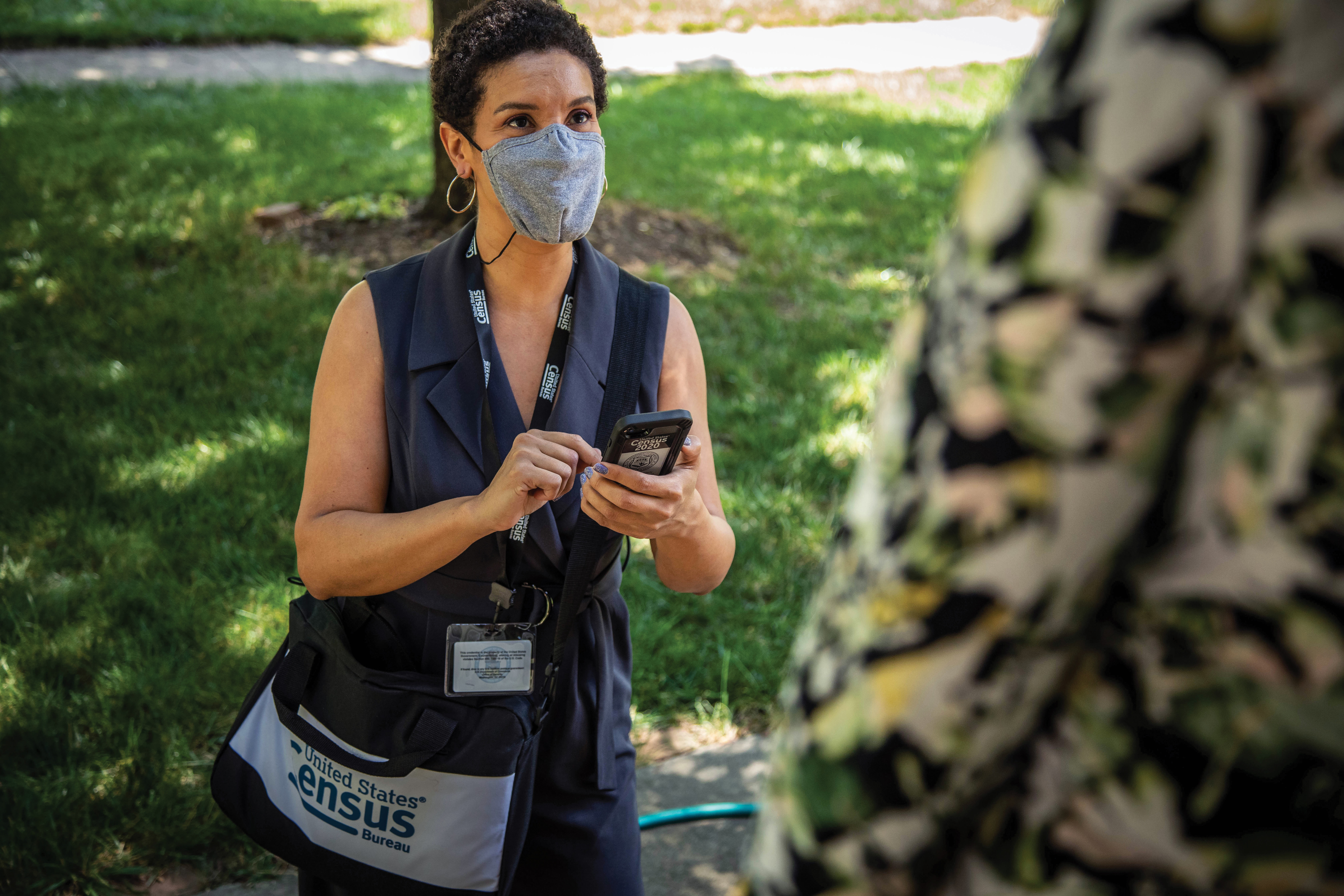Lawsuits, extensions, pandemics, and uncertainty defined a 2020 census that may still have some storylines to write yet.
Barring wildcard changes, the 2020 Census counting is done, and has been since mid-October.
At the time of this writing, there was some question as to whether the deliverables—the new state-by-state population tallies to be reported to the president—would be accurate and ready by the statutory end-of-year deadline.
But there’s no question that the 2020 Census was, for better or worse, the most standout operation of its kind in living memory. Court actions, shifting target dates, and various sources’ mixed messages about the headcount’s use, to whom it applied and how factors like COVID-19 might impact it, really threw out any chance of a straightforward population sweep. And that has piqued curiosities about how the Census will be evaluated, and where it’s going.
“For about two or three months there, the Census Bureau (per the pandemic) shut down their field operations,” recalled Bob Coats, the Census liaison to Gov. Roy Cooper. In North Carolina, Coats said, the non-response followup piece of the Census field work, where census takers go door to door, didn’t start until mid-August, when 1.6 million houses hadn’t yet been counted—a high workload.
Still, the Census Bureau by Oct. 19 was reporting 99 percent completion nationally, with North Carolina in that apparently healthy range. The Bureau also said the national 67 percent self-response rate beat that of 2010.
“America stepped up and answered the call: shape your future by responding to the 2020 Census,” said Census Bureau Director Steven Dillingham. “Generally, better data comes from self-response, but after a decade of global decline in census and survey participation along with the challenges presented to communities by COVID-19, we had not expected to exceed the 2010 self-response rate.”
So what about that 99 percent completion rate? It sounds pretty good. But at present there’s a bit of mystery in it, and some concern.

North Carolina’s self-response rate was a little higher than 63 percent, while the Census Bureau said it counted 99.9 percent of the state’s households. What’s unknown, Coats said, is how complete the job was in terms of actually counting household members, versus using administrative data and imputation or inferences for a sort of guess.
“The concern has been that with the tightened time on collecting this information, the census worker didn’t have the time to be as thorough as possible, as they have been in the past in going door-to-door… They might be using (data guesses and imputation) at a much higher percentage this time around than they had in the past,” Coats said.
The worry with that is North Carolina has been growing rapidly, measuring as the fourth-fastest in the U.S. The data used in these guesses might be out of date or not reflective of actual characteristics. That leaves some question as to whether we’ll have an accurate picture of who and how populous we are. That’s important when it comes time to redraw electoral districts, one of the foremost projects following a decennial census.
Coats and his counterparts are keeping their eyes open for clarifying info, and he encourages local government officials to likewise stay tuned.
The Census Bureau is in the tabulation phase now and may cross into 2021 with it. Redistricting data is supposed to be available starting April 1, 2021, which will give local governments a look at population figures at the county and municipal levels.

The Office of State Budget and Management is currently working on a webinar to educate local officials on a tool that many municipalities used after the previous census to better their numbers, and that’s the Count Question Resolution Program, or CQR. It allows jurisdictions to challenge their recorded population total and submit evidence showing why it’s worthy of review. There’s no cost to the local government for entering the process, but it can be time-consuming in the production of case-supporting information. Coats also pointed out the new implementation of extra data-protection measures expected to impact aspects of the process.
Another option is the Special Census, a basic enumeration the Census Bureau will conduct at the request of a governmental unit.
“When local officials believe there has been a significant population change in their community due to growth or annexation, a Special Census may be in order,” the Bureau says. “The Official Census statistics produced by conducting a Special Census may produce an increase in state revenue sharing or other benefits. This could also offset the cost of actually conducting the Special Census, but much depends on the individual state’s laws or
regulations.”

That’s right—unlike the CQR, a Special Census isn’t free and can be quite expensive. The state has not provided offsetting funds in the past, so it’s generally at the expense of the local government. It’s not a flat cost; the jurisdiction has to request an estimate from the Bureau.
But, with each Census-counted person in North Carolina representing $1,823 in funds per year, it’s still a worthy tool North Carolina communities have successfully pursued. The rapidly growing Morrisville spent $510,000 for a Special Census in 2015. It paid off, according to the Raleigh News & Observer, as the Special Census found thousands more residents than previously recorded, opening up the town to greater funding eligibility that essentially healed the added costs.
Steps are in place to get the most accurate counts possible under the circumstances. Indeed, the Census Bureau is, at its core, nothing more than a data collection agency. But those circumstances, from politics to the pandemic to the fact that this was the first Census with online responses and other factors, assure that the 2020 Census will be extra-heavily analyzed and scrutinized and possibly the subject of additional lawsuits.
In the meantime, experts like Coats say municipal leaders should keep the Census at their attention and prepare. They should have ready the most current data possible on their towns’ boundaries and placement of housing units and group quarters in the event they need to mount a challenge via the free CQR.
Essentially, it’s not over.
“Let’s don’t waste time on that,” said Coats. “Be ready when the data comes out.”













